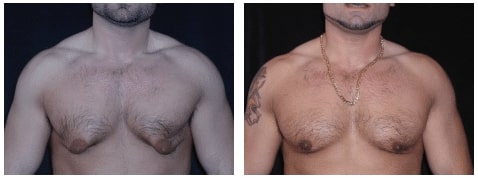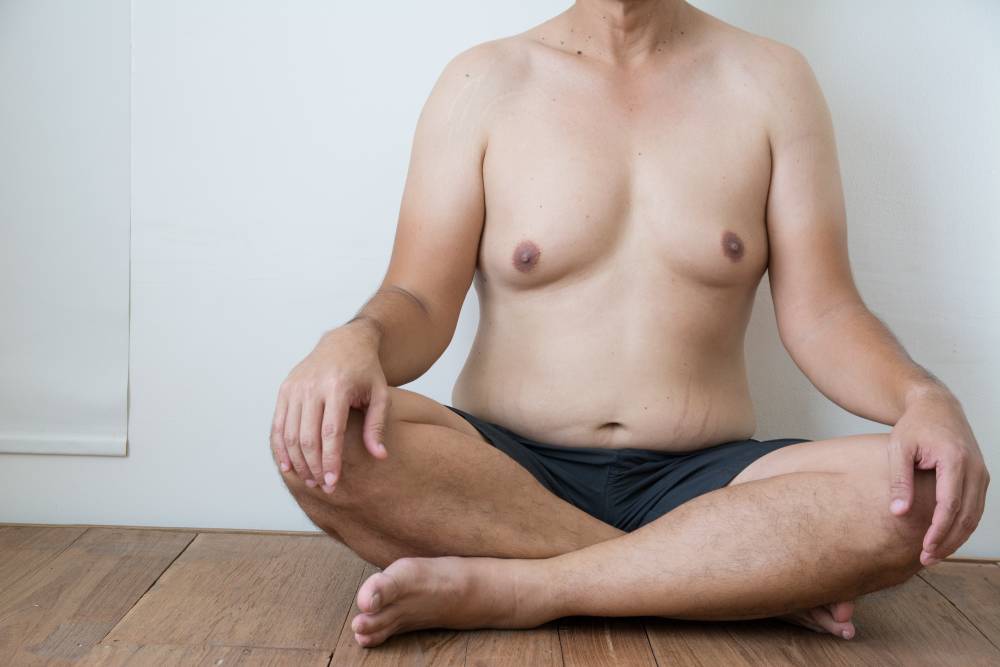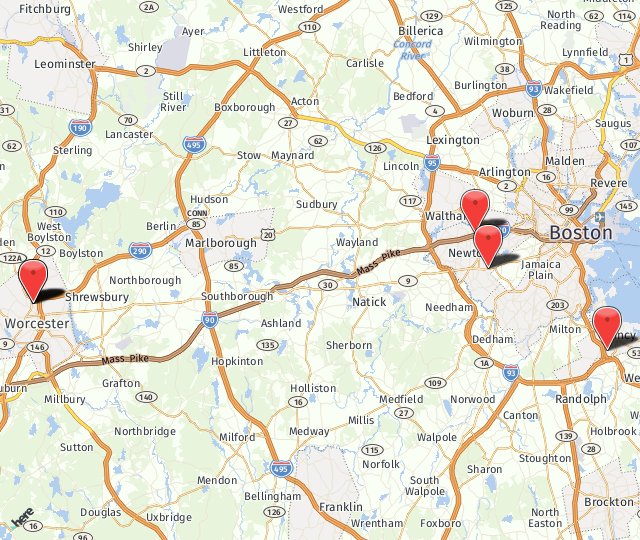Gynecomastia with skin excision surgery helps men struggling with excess breast tissue and sagging skin. Richard Silverman, MD, in Boston, MA, offers tailored solutions addressing the underlying gynecomastia and the skin laxity that often accompanies it.
Dr. Silverman is a surgeon certified by the American Board of Plastic Surgery. He is highly skilled in male chest contouring and dedicated to helping patients achieve a firmer, more masculine appearance.
If you're looking for an effective solution to enhance your confidence and feel your best, this procedure may be the answer.
Why Would I Need Gynecomastia With Skin Excision Surgery?
In some patients who present with gynecomastia, there will be an excess of skin in addition to the excess fat and “glandular” tissue of the breast. This is typical after weight loss and in some patients who have very significant breast development.
How Do I Prepare For My Breast Reduction With Skin Removal Surgery?
As with all surgery, avoidance of NSAIDS and other items that can cause bleeding for 7 to 10 days pre-op is necessary. We have our patients wash with a surgical soap on the day and morning prior to the surgery. Nothing to eat or drink after midnight the night before the surgery.
What Can I Expect During The Gynecomastia Procedure?
You’ll be asleep through the surgery. But you’ll get an IV prior to the operation and you may have a little bit of a sore throat afterwards due to the breathing device that’s used during the surgery.
Gynecomastia With Skin Excision Before And After

How Long Does The Gynecomastia With Skin Removal Procedure Take?
If just peri-areolar skin removal is needed, the procedure takes about 2 to 2.5 hours. If larger flap procedures are needed, the procedure takes 2.5 to 3 hours.
Breast Reduction With Skin Excision Recovery
The recovery phase after surgery is typically considered over a six week period. When skin excision is required, depending on which technique is used, the major difference comes in the early period, when consideration must be given to extensive dead space under flaps (if a flap technique is used) or if less dissection was involved, there are still more skin incisions to tend to in the first weeks. After getting through the initial healing and once it’s clear that no fluid collections (seromas) have developed or bleeding has occurred, the subsequent management is the same as in those patients without skin removal.
Will I Have Scarring From My Gynecomastia With Excision Surgery?
There will be scars around the areola and possibly in the infra-mammary fold.
When Can I Work Out After My Male Breast Reduction?
Physical movement is a necessary aspect of a good surgical recovery. Dr. Silverman will advise you to start walking as soon as you can. Walking short distances several times a day can support optimal blood flow. This optimizes your recovery and also minimizes your risk of developing blood clots due to inactivity. However, walking is all that you should do during your first week of recovery, and you need to keep it in check. No power walking just yet.

If your male breast reduction has included skin excision, you have a little more healing to do than the average gynecomastia patient. Dr. Silverman will let you know when you can increase your walking distance and speed. In most cases, after the first full post-operative week, you will be cleared to start low-impact cardio such as a stationary bike or an elliptical trainer. Upper body exercises are completely off-limits for the first two weeks. Dr. Silverman will advise you on reintroducing upper body exercises after two weeks in conjunction with range of motion exercises.
As you return to a more active workout schedule, you need to go slow. Your muscle strength won't be what it was before. It needs to be rebuilt gradually and may need to begin with the use of exercise machines rather than free weights. Dr. Silverman works with many people in the fitness industry. He understands the strong desire that patients have to resume their more intense workouts. After your surgery, he will be very clear about when you can do so without compromising your surgical results.
Can My Gynecomastia Return After Surgery?
It's possible that breast tissue may enlarge again after having gynecomastia surgery. This can happen but it usually does not. If gynecomastia were to return after male breast reduction, there are usually two potential reasons. The first is that you've gained weight and the fat cells that are located in the breast area have enlarged. This is referred to as pseudogynecomastia. Fortunately, it can be resolved by losing weight and taking great care of your body. Another reason that some men experience the recurrence of gynecomastia is that their surgeon did not remove all of the glandular tissue involved in breast enlargement. Finally, male breast enlargement often occurs as a result of certain medications or anabolic steroids. Though rare, it's possible that these factors may instigate a recurrence of gynecomastia after surgery.
Is Surgery the Only Solution for Gynecomastia?
A variety of nonsurgical treatments have been devised in recent years to manage the issue of unwanted fat. CoolSculpting is an example. We don't perform CoolSculpting in our office due to its limitations. These are especially prominent when it comes to male breast enlargement. Treatments like CoolSculpting, and even liposuction, work on fat. They do not address the other significant factor that contributes to gynecomastia, the glandular tissue. Diet and exercise may also reduce the appearance of fatty breast tissue but cannot eliminate the overactive glandular tissue that is causing a puffy appearance.
If you want to get rid of enlarged breasts and do it quickly, surgery is the best way to achieve your goals. Dr. Silverman has performed many body contouring and breast procedures, including gynecomastia surgeries. During your consultation, he can answer all of your questions about how this technique can work for you.
How Is Gynecomastia With Skin Excision Surgery Different From Traditional Gynecomastia Surgery?
Gynecomastia with skin excision surgery addresses both the excess breast tissue and loose skin. This skin may not always retract after the tissue is removed.
Traditional gynecomastia surgery generally removes excess fat and glandular tissue through liposuction or excision. However, it may not address significant skin laxity.
Adding skin excision in more advanced cases ensures a firmer, flatter chest contour. This is especially true when a large amount of sagging skin needs to be tightened.
Am I a Good Candidate for the Gynecomastia With Skin Excision Procedure?

Good candidates for gynecomastia with skin excision surgery are men who have significant chest enlargement accompanied by excess sagging skin. This is common in individuals who have experienced weight fluctuations or have more advanced stages of gynecomastia.
Additionally, candidates should:
- Be in good general health
- Have realistic expectations
- Be non-smokers
You may only need traditional gynecomastia surgery without skin excision if you have good skin elasticity.
Will I Need Drains After the Procedure?
In some cases, drains may be necessary after the gynecomastia with skin excision procedure. They will help remove excess fluids and prevent complications such as seromas (fluid buildup).
Dr. Silverman will determine whether drains are needed based on the extent of the surgery and the amount of tissue and skin removed. Drains are typically removed within a few days to a week, depending on your healing process.
Can Gynecomastia Surgery With Skin Excision Correct Asymmetry in the Chest?
How Soon Can I Return to Work After Gynecomastia With Skin Excision Surgery?
Most patients can return to work within 1 to 2 weeks after the procedure. However, it depends on the nature of their job. If your work involves strenuous physical activity, you may need to wait longer (around 4 to 6 weeks).
Follow Dr. Silverman's postoperative care instructions to ensure proper healing and avoid complications.
Why Choose Rick Silverman, MD?
Choosing Dr. Rick Silverman for gynecomastia surgery with skin excision means receiving superior care from a specialist in aesthetic surgery for bodybuilders and fitness trainers. With decades of experience and certification by the American Board of Plastic Surgery since 1995, Dr. Silverman combines his expertise with a deep understanding of the unique needs of individuals seeking a sculpted and masculine appearance. His attention to detail and personalized approach make him a trusted choice for those seeking impressive results.
Schedule A Consultation
If you would like to learn more about Gynecomastia with skin excision, call (617) 965-9500 to schedule a consultation with Boston Plastic Surgeon Dr. Rick Silverman or complete an online contact form and our office will be in touch with you!

